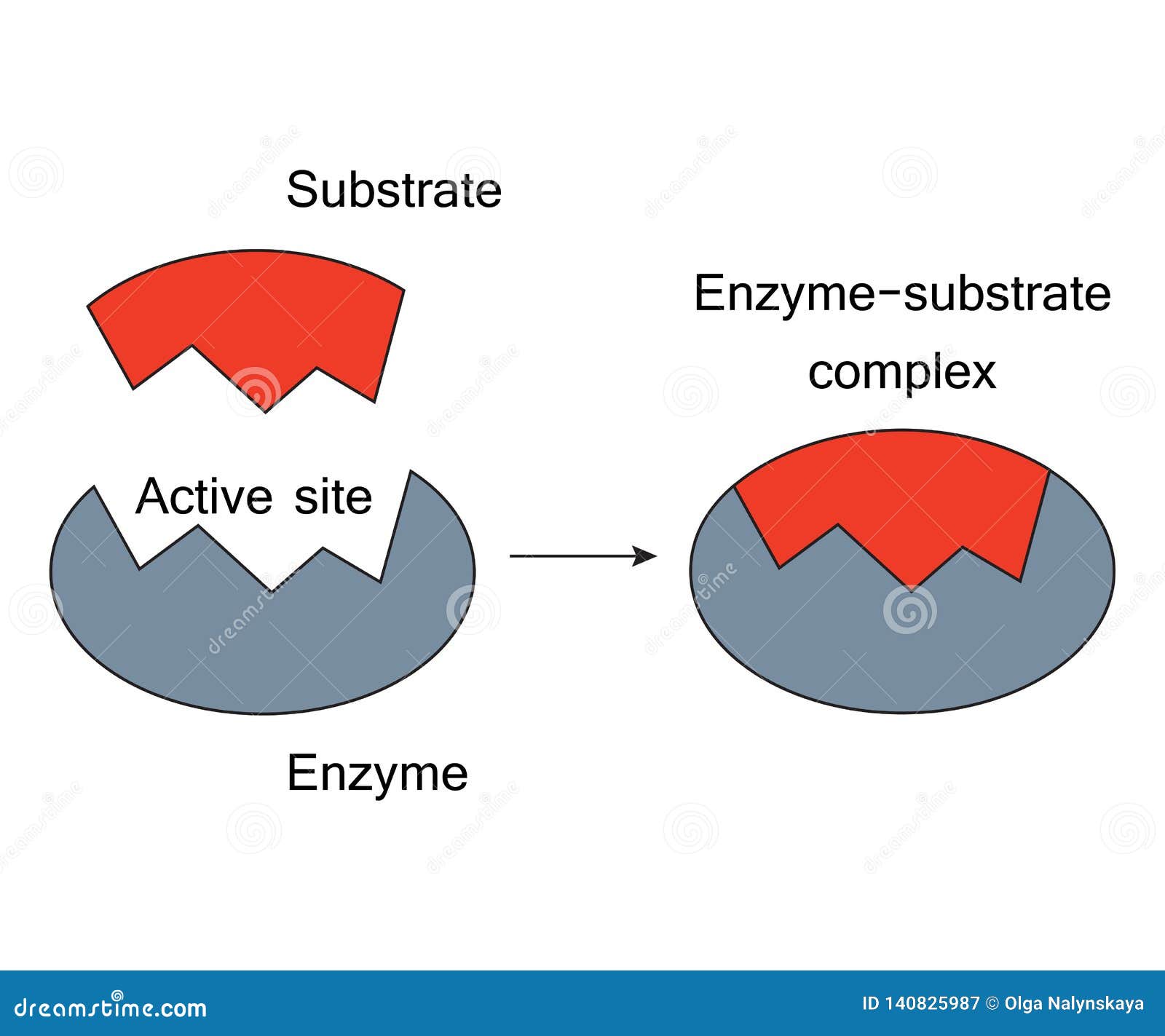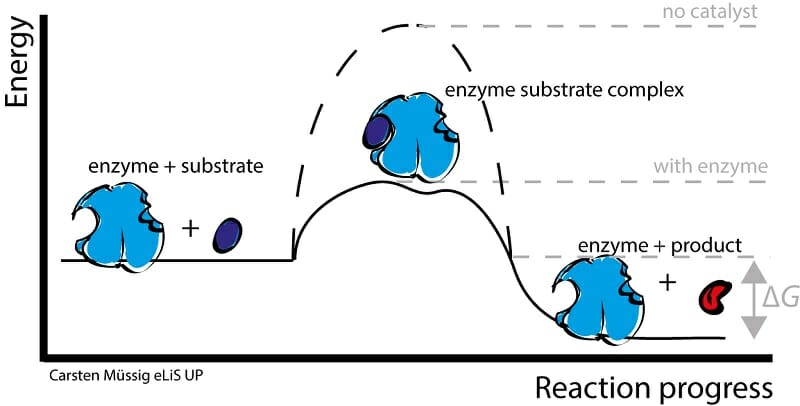Explain the Different Parts of an Enzyme-substrate Complex
E S ES EP E P. After binding of substrate to active site of enzyme the binding site for inhibitor forms at allosteric site so that inhibitor bind.

Enzyme Their Substrates Mode Of Action Plantlet
The active site changes shape in order to have a closertighter fit between the active site and the substrate to allow more bonds form between the substrate and the active site.

. Enzyme-Substrate Complex When an enzyme binds its substrate it forms an enzyme-substrate complex. This complex lowers the activation energy of the reaction and promotes its rapid progression by providing certain ions or chemical groups that actually form covalent bonds with molecules as a necessary step of the reaction process. The enormous catalytic activity of enzymes can perhaps best be expressed by a constant k cat that is variously referred to as the turnover rate turnover frequency or turnover numberThis constant represents the number of substrate molecules that can be converted to product by a single enzyme molecule per unit time usually.
After the reaction is complete the enzyme releases a product the substance or molecule. This enzyme-substrate molecule now reacts with the second substrate to form the product and the enzyme is liberated as the second product. Enzymes are very very specific and dont just grab on to any molecule.
There are four common mechanisms by which most of these interactions are formed and alter the active site to create the enzyme-substrate complex. The place where these molecules fit is called the active site. Once the reaction is complete the enzyme remains the same but the substrate transforms to products.
All enzymes have a specific three-dimensional structure and a part of their structure is known as active sites. In the above illustration enzyme E binds with substrate S forming an enzyme-substrate complex ES. In the last step the product P leaves the active site of the enzyme E.
The active site is like the grasping claw of the robot on the assembly line. Each enzyme has an active site which is where one of the substrate molecules can bind to. The binding of inhibitor distorts the active as well as allosteric site of enzyme inhibiting catalysis.
A part of the enzyme called the active site is the pockets or crevices where the substrate fits. But the catalytic site involves hydrophobic interaction in the attachment of a substrate with an enzyme. A substrate is loaded into the active site of the enzyme or the place that allows weak bonds to be formed between the two molecules.
The point where the substrate is bound on the active site is known as the substrate-binding site. The active site is a specially shaped area of the enzyme that fits around the substrate. Finally the enzyme-product complex EP dissociates to release the products.
Other than hydrophobic interaction there are three other mechanisms like Vander. An active site is a site into which a substrate fits to proceed with chemical reactions. First binding forms a low energy enzyme-substrate complex ES.
Enzymes are folded into complex 3D shapes that allow smaller molecules to fit into them. The enzyme slightly changes shape as it bonds with the substrate to create the enzyme-substrate complex. An enzyme substrate complex is formed and the forces exerted on the substrate by the enzyme cause it to react and become the product of the intended reaction.
Enzymes are potent catalysts. The active site in an enzyme consists of few amino acids which come together in a particular manner during the tertiary folding of a protein molecule and its. The initial binding of substrate and enzyme occur through the non-covalent bond.
The combination is called the enzymesubstrate complex. In other words the enzyme reacts with the substrate forming an enzyme-substrate complex. Following the ES complex formation E and S interaction takes place resulting in an enzyme product EP complex.
This forms the enzyme-substrate complex. Each enzyme acts upon a specific target called substrate which is transformed into usable products through the action of the enzyme. At first substrate binds to enzyme to form ES-complex.
Tertiary structure3D shape of enzyme means active site complementary to maltosesubstratemaltose fits into active site enzyme changes shape slightly which puts a strain on the substrate molecule and distorts a bond enzyme is a catalystlowers the activation energy by forming enzyme-substrate complex. Covalent catalysis general acid-base catalysis catalysis by approximation and metal ion catalysis. It can only pick up one or two parts.
Thus an enzyme- substrate complex is formed. A ternary complex is made up of one enzyme and two substrates whereas a binary complex is made up of one enzyme and one substrate. Elastin is a substrate which binds to the active site.
Formation of enzymes substrate complex. A substrate is a molecule acted upon by an enzyme. The point where the substrate is bound on the active site is known as the substrate-binding site.
These substrates are attracted to the active site by hydrophobic and electrostatic forces that are known as noncovalent bonds because they are physical attractions but not chemical bonds. Second the enzyme stabilises the transition state such that it requires less energy to achieve compared to the uncatalyzed reaction ES. There are many theories that explain how enzymes.
Hydrophobic binding of the substrate to the active site of an enzyme increases the binding affinity.

Lock And Key Model Enzyme Substrate Complex Stock Vector Illustration Of Site Protein 140825987

Enzyme Substrate Complex Definition Examples Biology Dictionary


0 Response to "Explain the Different Parts of an Enzyme-substrate Complex"
Post a Comment